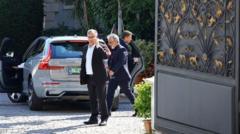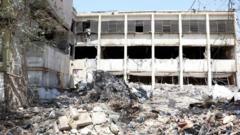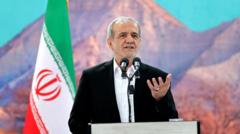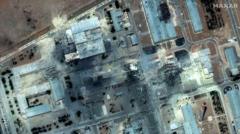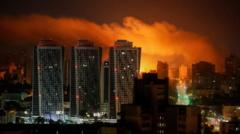Tehran's Contemporary Art Museum preserves a remarkable collection of modern art, including works by Picasso, Warhol, and Pollock, that highlights the complexities of cultural identity amidst revolutionary history.
A Hidden Treasure: The Masterpieces of Tehran's Contemporary Art Museum
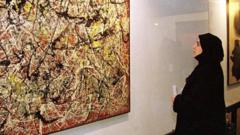
A Hidden Treasure: The Masterpieces of Tehran's Contemporary Art Museum
Exploring the incredible but seldom-seen art collection in Iran's capital, housing masterpieces by globally renowned artists.
The Tehran Museum of Contemporary Art is often described as one of the world's most exceptional hidden gems, with its extensive collection of modern art masterpieces largely unknown to the world. Nestled in the heart of Iran's capital, Tehran, the museum features iconic works by renowned artists such as Pablo Picasso, Vincent Van Gogh, Andy Warhol, and Jackson Pollock, with an estimated value of around $3 billion as of 2018.
Since the 1979 Iranian Revolution, little of the collection has been shown to the public, but recent exhibitions have started to change that. The Eye to Eye exhibition, which launched in October 2024, became a landmark showcase, extending until January 2025 due to overwhelming public interest. It included over 15 previously unseen pieces, such as a sculpture by Jean Dubuffet, marking its debut in Iran. This exhibition stands as one of the museum's most significant and visited events, drawing attention to its deeply historical and culturally rich collection.
Ranging from abstract expressionism to pop art, the museum’s collection serves not only as a treasure trove of artistic evolution but also as a tapestry rich with Iran's unique cultural narratives. Among the pieces are Warhol's iconic portrait of Farah Pahlavi, the last queen of Iran, alongside stirring depictions like Francis Bacon's Two Figures Lying on a Bed with Attendants and a contrasting portrait of Ayatollah Khomeini, which embodies the tensions between modernity and tradition in Iran's art scene.
Originally established in 1977 under the auspices of Farah Pahlavi, the museum was designed to cultivate an appreciation for contemporary art in Iran and establish a bridge to the global art community. Despite its potential, the situation drastically shifted following the revolution, leading to many artworks being deemed unsuitable for public exhibition due to their nudity, political implications, or religious sensitivities. Once considered a cultural sanctuary, the museum's collection fell into virtual oblivion, hidden away in a basement.
It wasn’t until the late 1990s, during the reformist presidency of Mohammad Khatami, that the museum regained its cultural momentum. The collection, including works by Van Gogh, Dali, and Monet, briefly re-entered the international scene as pieces were loaned to exhibitions in Europe and the United States, reclaiming its significance in the art world. Art historian Hamid Keshmirshekan describes it as "one of the rarest treasure troves of modern art outside the West."
Notable pieces still housed in the museum include Jackson Pollock's dynamic Mural on Indian Red Ground, Picasso's monumental The Painter and His Model from 1927, and Van Gogh's evocative At Eternity's Gate, showcasing the wide-ranging artistic legacy the museum preserves. Despite ongoing challenges stemming from political strains and limited budgets, the Tehran Museum of Contemporary Art stands firm as a vital custodian of modern masterpieces, quietly restoring a rich cultural identity amid the complexities of its turbulent history.
While opportunities for international art lovers to experience this collection are fraught with challenges—particularly for those in the UK due to government travel warnings—the museum continues to serve as a remarkable tribute to artistic endeavor in the heart of Tehran.
Since the 1979 Iranian Revolution, little of the collection has been shown to the public, but recent exhibitions have started to change that. The Eye to Eye exhibition, which launched in October 2024, became a landmark showcase, extending until January 2025 due to overwhelming public interest. It included over 15 previously unseen pieces, such as a sculpture by Jean Dubuffet, marking its debut in Iran. This exhibition stands as one of the museum's most significant and visited events, drawing attention to its deeply historical and culturally rich collection.
Ranging from abstract expressionism to pop art, the museum’s collection serves not only as a treasure trove of artistic evolution but also as a tapestry rich with Iran's unique cultural narratives. Among the pieces are Warhol's iconic portrait of Farah Pahlavi, the last queen of Iran, alongside stirring depictions like Francis Bacon's Two Figures Lying on a Bed with Attendants and a contrasting portrait of Ayatollah Khomeini, which embodies the tensions between modernity and tradition in Iran's art scene.
Originally established in 1977 under the auspices of Farah Pahlavi, the museum was designed to cultivate an appreciation for contemporary art in Iran and establish a bridge to the global art community. Despite its potential, the situation drastically shifted following the revolution, leading to many artworks being deemed unsuitable for public exhibition due to their nudity, political implications, or religious sensitivities. Once considered a cultural sanctuary, the museum's collection fell into virtual oblivion, hidden away in a basement.
It wasn’t until the late 1990s, during the reformist presidency of Mohammad Khatami, that the museum regained its cultural momentum. The collection, including works by Van Gogh, Dali, and Monet, briefly re-entered the international scene as pieces were loaned to exhibitions in Europe and the United States, reclaiming its significance in the art world. Art historian Hamid Keshmirshekan describes it as "one of the rarest treasure troves of modern art outside the West."
Notable pieces still housed in the museum include Jackson Pollock's dynamic Mural on Indian Red Ground, Picasso's monumental The Painter and His Model from 1927, and Van Gogh's evocative At Eternity's Gate, showcasing the wide-ranging artistic legacy the museum preserves. Despite ongoing challenges stemming from political strains and limited budgets, the Tehran Museum of Contemporary Art stands firm as a vital custodian of modern masterpieces, quietly restoring a rich cultural identity amid the complexities of its turbulent history.
While opportunities for international art lovers to experience this collection are fraught with challenges—particularly for those in the UK due to government travel warnings—the museum continues to serve as a remarkable tribute to artistic endeavor in the heart of Tehran.

